How Hezbollah's 'Khaybar operations' forced Israeli regime to seek ceasefire
By Alireza Akbari
In a statement on Tuesday, shortly after the ceasefire agreement was announced, Hezbollah's operations room revealed the private residence of Israeli Air Force Commander Major General Tomer Bar in Tel Aviv was targeted on November 18, 2024.
The attack, it stated, was executed using a “squadron of advanced attack drones." However, the news was censored by the Israeli regime to avoid further embarrassment.
It wasn't the first such high-precision strike targeting a vital site. On October 19, the holiday residence of Israeli Prime Minister Benjamin Netanyahu in Caesarea was attacked by a Hezbollah drone.
After initial hesitance, Netanyahu’s spokesman acknowledged that one of three drones launched from Lebanon successfully struck the prime minister’s home.
Eyewitnesses reported a “large volley of rockets” from Lebanon serving as decoys to facilitate the successful drone strike, triggering sirens across northern occupied territories.
The drone landed inside the highly-fortified house and caused significant damage, although the details were censored like attacks on other high-value targets in the occupied territories.
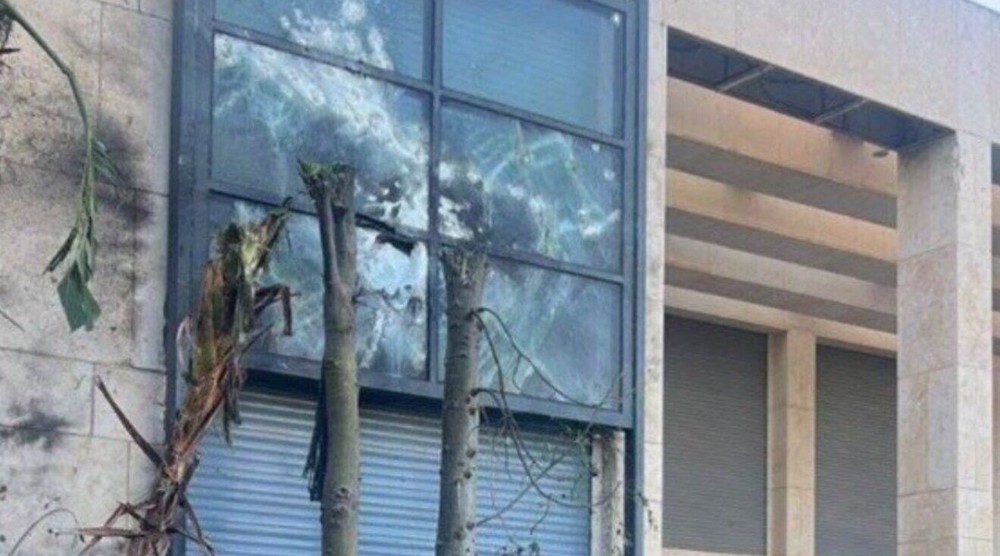
The successful infiltration of Hezbollah’s drone, which traveled nearly 70 kilometers undetected inside the occupied territories, sparked great concern in the power corridors of Tel Aviv, according to analysts.
Hezbollah’s (now martyred) media office head, Mohammad Afif, later claimed responsibility for the operation during a news conference on October 22. He emphasized that while Netanyahu was unharmed in the attack, “the coming days and nights and the (battle) fields are between us.”
Following the drone strike on Netanyahu’s residence, Israel launched a series of airstrikes on Beirut’s southern suburbs, resulting in an unprecedented death toll among civilians.
Less than a month later, on November 16, amid intensified Israeli airstrikes on civilian areas in Beirut, Netanyahu’s home in Caesarea came under attack again, this time involving “two flares.”
Israeli police reported that the flares were detected near Netanyahu's residence, landing in the yard.
The elite Israeli Golani Brigade, one of the five infantry brigades of the Israeli army and the most notorious, also suffered a significant blow on October 13, 2024, when its command center was attacked by the Lebanese movement’s drones near Binyamina, south of occupied Haifa.

Hezbollah stated that the attack was in response to “Zionist aggressions, especially on the neighborhoods of Al-Nuwairi and Al-Basta in the capital Beirut and other regions of Lebanon,” as well as in retaliation for the massacres committed by the Israeli forces in Gaza.
The strike, which penetrated deep inside occupied territories with Hezbollah’s drone traveling nearly 40 miles undetected, resulted in dozens of Israeli soldiers killed and hundreds more severely injured.
Hezbollah claimed responsibility for targeting the Israeli military camp with a “swarm” of drones.
In a separate statement, the group also announced it had struck the Israeli Tsnobar logistics base in the Golan Heights with a missile, sparking more concerns and fears in the enemy camp.
This drone strike occurred on the same day that the United States announced it would send a new “air defense system to Israel to enhance its protection against missile attacks.”
Since October 2023, the Lebanese resistance has stood in solidarity with the oppressed Palestinians, employing a tit-for-tat strategy against the Israeli regime by targeting its military bases.
The resistance movement intensified its operations after the regime launched all-out aggression against Lebanon and assassinated Hezbollah leader Sayyed Hassan Nasrallah in late September.
On October 1, 2024, Hezbollah launched its series of “Khaybar” operations in retaliation for the targeting of civilians in Gaza and Beirut and the massacres committed by the Israeli regime.
The notorious Israeli cyber unit 8200 was the first target of these operations, with Hezbollah fighters firing a barrage of Fadi-4 missiles at the “Glilot” base, which houses the Military Intelligence Unit 8200 and the Mossad headquarters on the outskirts of Tel Aviv, as well as the Sde Dov airbase.
On October 3, Hezbollah fighters targeted the “Nasher” base east of occupied Haifa with a barrage of Fadi-2 rockets. Three days later, on October 6, the Israeli “Carmel” base, located south of occupied Haifa, was struck by a barrage of Fadi-1 missiles.
On October 7, the cyber unit 8200 faced another attack from Hezbollah, which launched a barrage of rockets aimed at the “Glilot” base. Nearly a week later, as part of the Khaybar operations, the Islamic Resistance executed a precision rocket barrage on the "Tira Carmel" base in southern occupied Haifa.
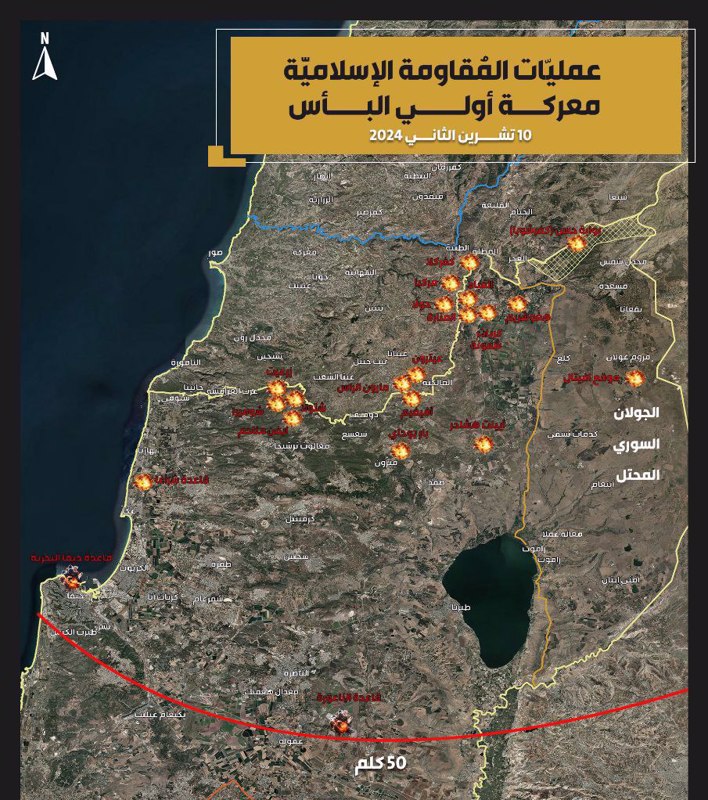
On October 13, in addition to the attack on the Golani Brigade, Hezbollah launched a significant rocket barrage on the Rehabilitation and Maintenance Center (7200) south of occupied Haifa. The following day, the “Tira Carmel” base was again targeted by Hezbollah with a barrage of rockets.
On October 17, the Israeli "Stella Maris" naval base northwest of occupied Haifa and the "Beit Lid" base east of occupied Netanya were targeted by Hezbollah in a coordinated rocket barrage.
The following day, October 18, Hezbollah continued its Khaybar series of operations, launching a swarm of attack drones at the "Ein Shemer" base, which serves as a missile defense and regional brigade base east of Khdeira.
The Israeli military's "Kiryat Eliezer" site, the main air defense base west of occupied Haifa, was also struck by Hezbollah missiles on the same day, along with the "Nashrim" base southeast of occupied Haifa, which came under attack from a squadron of drones.
On October 19, Hezbollah launched a significant missile barrage on the Israeli military base in "Nasher." The "Kiryat Ata" settlement east of occupied Haifa also experienced a qualitative rocket barrage as part of the Khaybar operations.
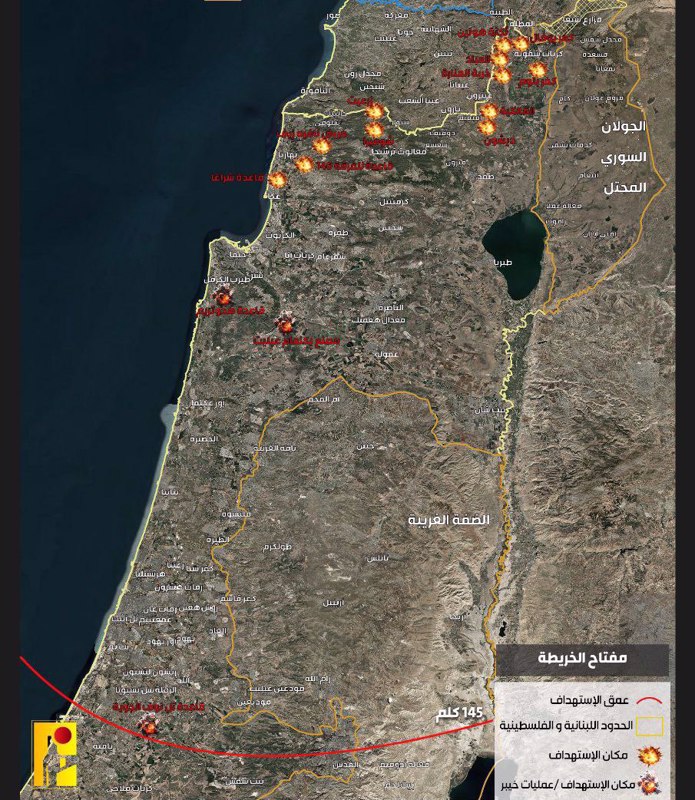
The following day, October 20, Hezbollah escalated its attacks by targeting the "Samson" base, a command supply center and regional supply unit west of Lake Tabariyya, with a substantial rocket barrage for the first time.
On October 21, the "Glilot" base, associated with the military intelligence Unit 8200 in the suburbs of Tel Aviv, was bombed with precision rockets as part of the Khaybar series.
In a series of attacks on October 22, Hezbollah targeted the "Nirit" Dome on the outskirts of Tel Aviv and the "Stella Maris" naval base northwest of occupied Haifa with qualitative missiles. The movement also struck the TAAS Military Industries Company in the suburbs of Tel Aviv with precision missiles.
On October 23, Hezbollah continued its attacks by launching an aerial attack with a squadron of drones on the "Eliakim" base south of occupied Haifa.
The resistance movement also targeted the "Hatzor" settlement with a precision rocket barrage. Additionally, the TAAS Military Industries Company was struck again with accurate missile fire.
On October 24, Hezbollah bombed the "Nashrim" base southeast of occupied Haifa with qualitative missiles. On October 25, it targeted the "Ramat David" air base with a significant missile strike.
On October 26, Hezbollah launched an aerial attack with a squadron of drones as part of its Khaybar operations, targeting the "Tel Nof" airbase south of Tel Aviv and hitting its targets with precision.
The Lebanese resistance movement also struck gatherings of Israeli regime forces at the “Ayelet” base with a qualitative rocket barrage on the same day.
Two days later, Hezbollah targeted the "Yodfat" Military Industries Company southeast of occupied Akka with an attack drone, successfully hitting its mark, along with a qualitative rocket barrage on the "Stella Maris" naval base northwest of occupied Haifa.
On October 30, Hezbollah executed a complex attack involving qualitative missiles and a squadron of drones aimed at the "Ein Shemer" base, a missile air defense and regional brigade facility east of Khdeira. The attack also targeted Israeli enemy gatherings at the "Eliakim" camp of the Northern Command, south of occupied Haifa, and the "Shraga" base north of Akka, with the missiles and drones successfully evading interception as they traversed occupied Palestinian territory.
On the same day, the Islamic Resistance bombed the "Adam" training camp for special units southeast of Tel Aviv with qualitative missiles as part of the Khaybar operations.
The Khaybar series continued into November, with Hezbollah targeting the "Palmachim" Air Base, which houses a military research center and radar for the HITS system, south of Tel Aviv, using a squadron of drones on November 2.
The "Zevulun" military industries base north of occupied Haifa was also attacked that day.
On November 3, Hezbollah launched a squadron of drones on the “Eliakim” base, which includes training camps for the Northern Command, south of Haifa, accurately hitting its targets.
On November 6, the movement targeted the "Tzrifin" base, which includes military training colleges near Ben Gurion Airport south of Tel Aviv, with a barrage of qualitative missiles.
On the same day, Hezbollah conducted an aerial attack with a squadron of drones on the "Belo" base, associated with the reserve paratrooper brigade of the Israeli army, hitting it for the first time.
On November 7, Hezbollah targeted the "Eliakim" base again with a qualitative missile barrage. The following day, November 8, the resistance movement struck the Haifa Technical Base, an Israeli Air Force facility and training college for Air Force technicians, with a barrage of qualitative missiles.
On the same day, Hezbollah targeted the "MLM" military factory, which produces air and missile defense systems, located 132 kilometers from the Lebanese-Palestinian border south of Tel Aviv, also with a barrage of qualitative missiles.
On November 9, the Islamic Resistance launched its first air attack using a squadron of drones on the "Ein Khozlot" base, a military communications facility located 55 kilometers from the Lebanese-Palestinian border, successfully hitting its targets.
On November 10, Hezbollah conducted an aerial attack with a squadron of drones targeting the "Naoura" base, headquarters of the 36th Division, which houses emergency storage for reserve brigades, located 50 kilometers from the Lebanese-Palestinian border southwest of Lake Tabariyya, striking its targets with precision.
On November 11, the movement launched an air attack with a squadron of drones on the "Regavim" base, the main training base for the Golani Brigade, located 65 kilometers from the Lebanese-Palestinian border south of occupied Haifa, accurately hitting its targets.
On November 12, Hezbollah targeted the “HaHotrim” base, a major Israeli Air Force facility containing equipment and transport formations, located 40 kilometers from the Lebanese-Palestinian border, with a qualitative rocket barrage.
On the same day, the group launched an aerial attack with a squadron of drones on the “Yokneam Illit” factory, a military technology production facility located 50 kilometers from the Lebanese-Palestinian border southeast of occupied Haifa, successfully hitting its targets.
On November 13, the Islamic Resistance carried out its first aerial attack with a squadron of qualitative attack drones on the "HaKirya" base, the headquarters of the Israeli Ministry of War and General Staff, as well as the War Management Room and the Air Force’s Military Control and Oversight Authority in Tel Aviv, accurately striking its targets.
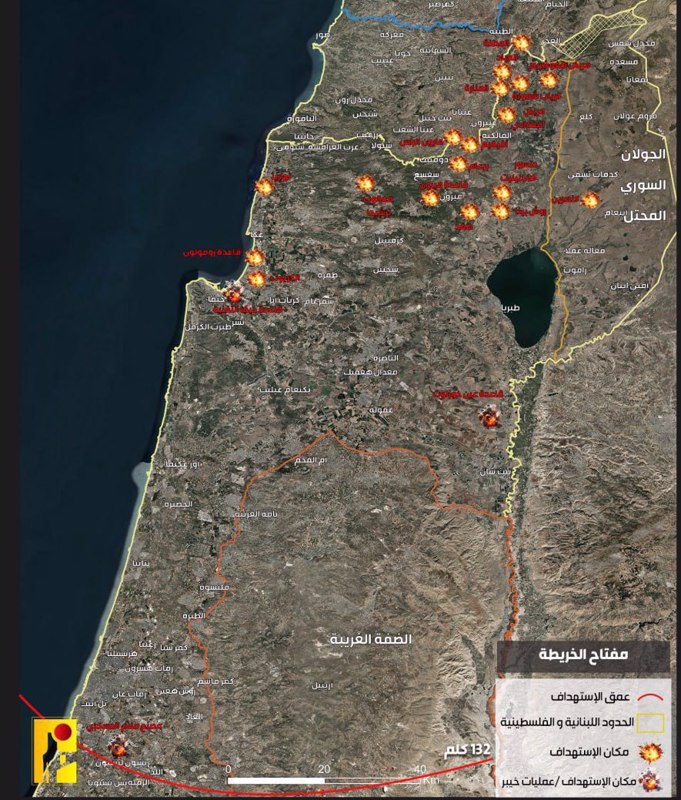
On the same day, the Islamic Resistance targeted the "IWI" Military Weapons Industries Company in Ramat Hasharon, located 110 kilometers from the Lebanese-Palestinian border, with a barrage of qualitative missiles, successfully hitting their targets for the first time.
The following day, November 14, fighters from Hezbollah launched an aerial attack using drones on the “Eliakim” base, which houses training camps affiliated with the Northern Command of the Israeli army, situated 50 kilometers from the Lebanese-Palestinian border south of Haifa.
On November 16, the Islamic Resistance targeted the “Stella Maris” naval base and the special naval missions unit "Shayetet 13" at the Atlit base.
Two days later, on November 18, the group conducted an air attack with a squadron of drones on the "Regavim" base, which contains training camps for the Golani Brigade, located 65 kilometers from the Lebanese-Palestinian border southeast of occupied Haifa, hitting its targets accurately.
On the same day, they launched an aerial attack on the "Beit Lid" base, which includes training camps for the Nahal and Paratroopers Brigades, situated 90 kilometers from the Lebanese-Palestinian border.
On November 21, the group targeted the "Hatzor" Air Base, a key facility housing a qualified reconnaissance formation and squadrons of warplanes, located 150 kilometers from the Lebanese-Palestinian border east of Asdod, with a barrage of qualitative missiles.
The following day, November 22, the Islamic Resistance struck the "Palmachim" base, a primary site for the Israeli Air Force that includes squadrons of unmanned aircraft, military helicopters, a military research center, and the Arrow air and missile defense system.
This operation, located 140 kilometers from the Lebanese-Palestinian border south of Tel Aviv, achieved its intended objectives.
Despite ongoing intelligence surveillance and active engagement by the Israeli air force, the resistance intensified its operations under the Khaybar series, executing precise strikes on strategic centers and military bases up to 145 kilometers into occupied Palestine using advanced missiles and drones.
These well-coordinated attacks reflect a clear strategy, demonstrating full control over battlefield dynamics and thorough assessments of the situation.
Since launching Khaybar operations on October 1, 2024, a total of 56 operations have been conducted, with 18 occurring recently.
Beyond military impacts, these operations have forced over 2 million settlers across more than 5,000 square kilometers to seek shelter and disrupt daily life, causing school closures, business halts, and disrupted air traffic, all in response to the call of "At your service, O Nasrallah."
According to analysts, these operations forced the embattled Israeli regime to involve the United States and France and seek a ceasefire with the Lebanese resistance movement Hezbollah.

Lebanese students protest to show solidarity with Palestinians in Gaza
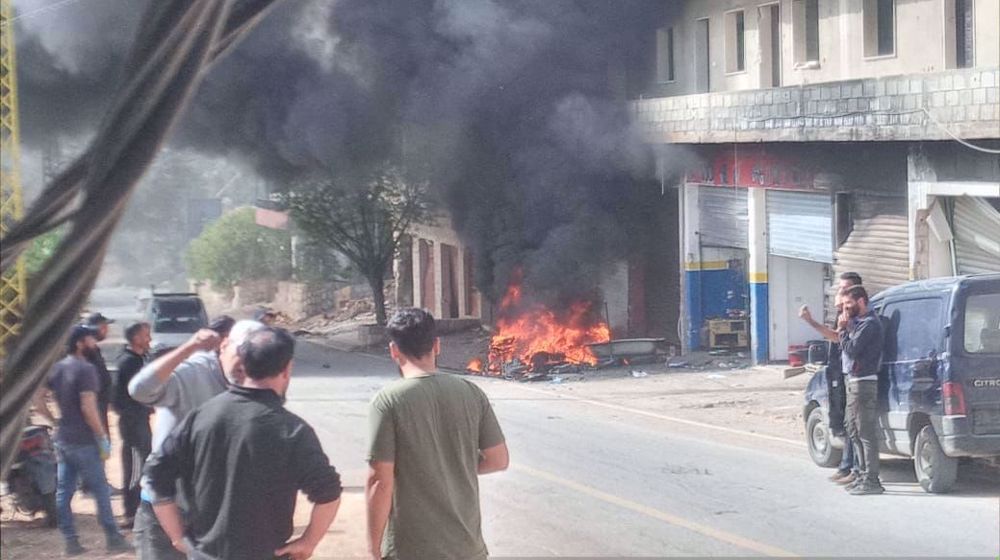
Lebanese man killed as Israel strikes south in violation of ceasefire

Lebanon calls on US to stop Israeli strikes, ceasefire violations
VIDEO | Press TV's news headlines
VIDEO | Israel systematically cripples Gaza NGOs
VIDEO | Iran opens advanced nuclear medicine center
Israel beats drums of war in run-up to Iran-US talks
US war machine takes Yemen under 22 new attacks; 16 killed, injured in al-Hudaydah
Americans know extent of Iran’s defensive power; Iran doesn’t trust US, but will test it: FM
Organization of American Historians condemns Israel’s ‘scholasticide’ in Gaza
Iran gains $1.3 billion from its gold import spree: Report


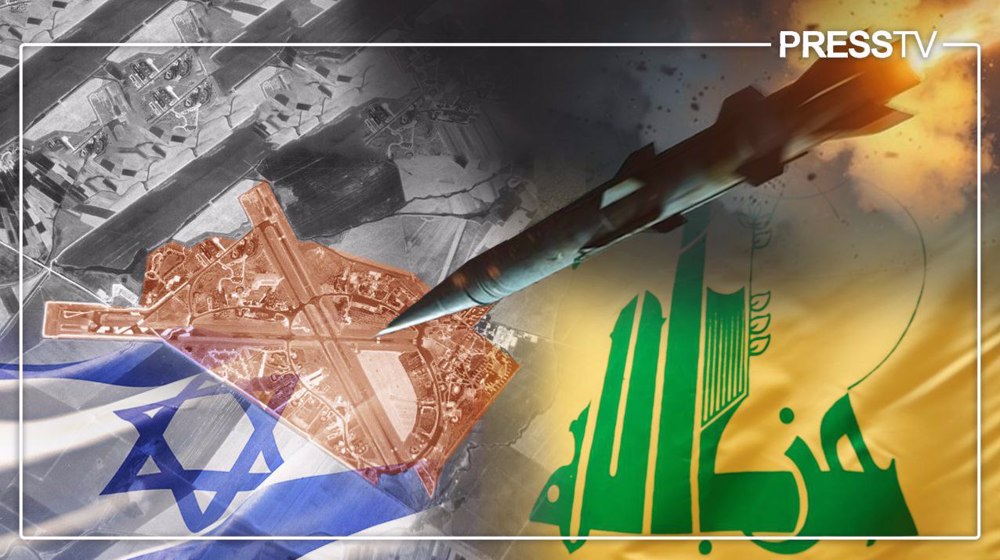





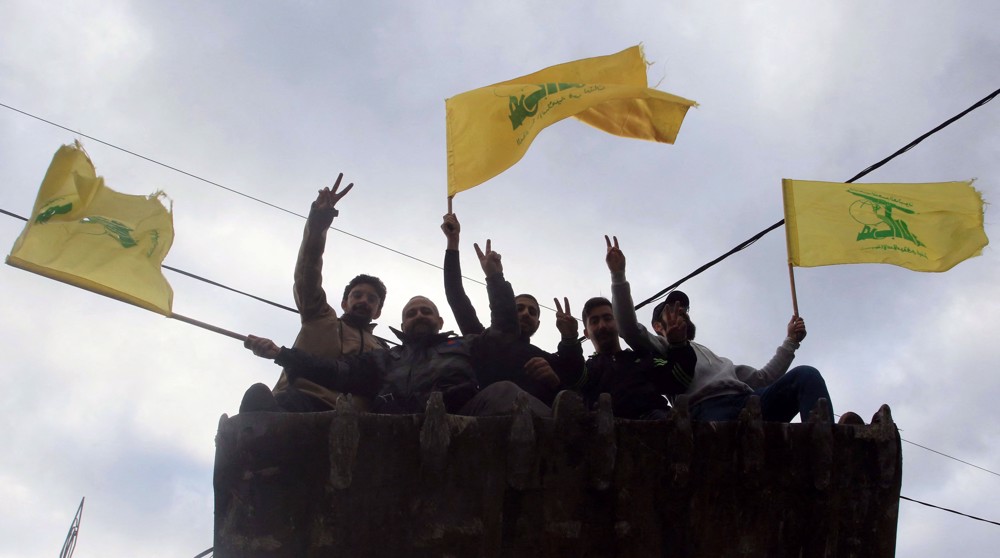
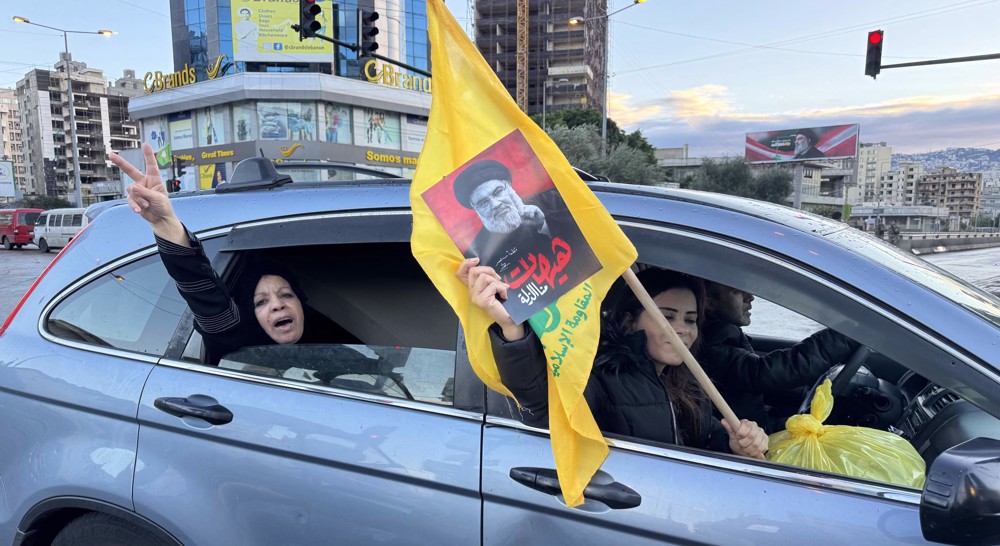


 This makes it easy to access the Press TV website
This makes it easy to access the Press TV website